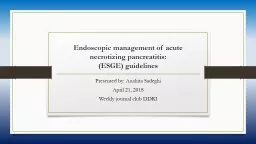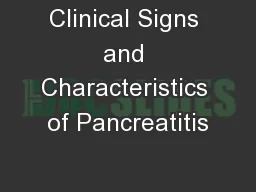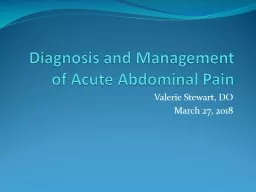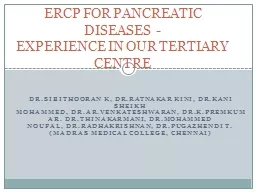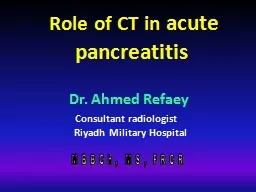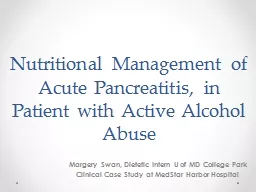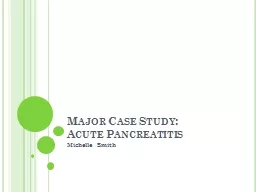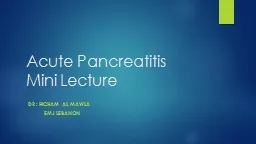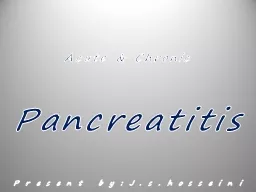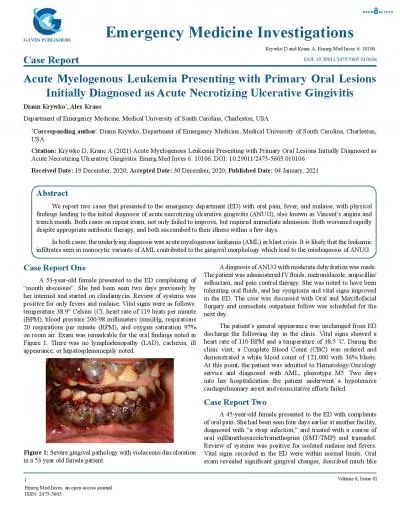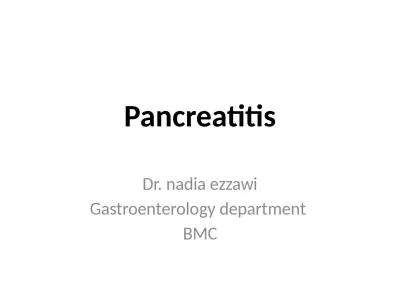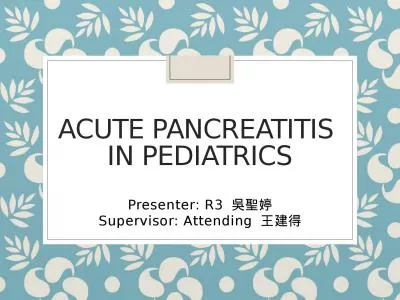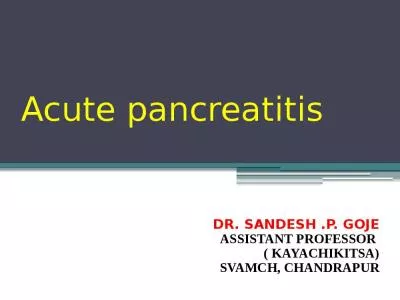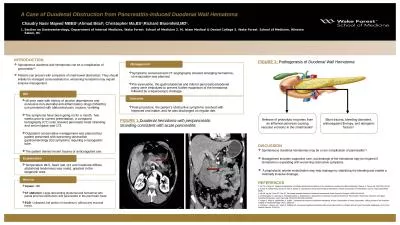PPT-Endoscopic management of acute necrotizing pancreatitis:
Author : attentionallianz | Published Date : 2020-06-25
ESGE guidelines Presented by Anahita Sadeghi April 21 2018 Weekly journal club DDRI http wwwszghsiimagesESGE171120Endoscopic20Management20of20Acute20Necrotizing20Pancreatitispdf
Presentation Embed Code
Download Presentation
Download Presentation The PPT/PDF document "Endoscopic management of acute necrotizi..." is the property of its rightful owner. Permission is granted to download and print the materials on this website for personal, non-commercial use only, and to display it on your personal computer provided you do not modify the materials and that you retain all copyright notices contained in the materials. By downloading content from our website, you accept the terms of this agreement.
Endoscopic management of acute necrotizing pancreatitis:: Transcript
Download Rules Of Document
"Endoscopic management of acute necrotizing pancreatitis:"The content belongs to its owner. You may download and print it for personal use, without modification, and keep all copyright notices. By downloading, you agree to these terms.
Related Documents

